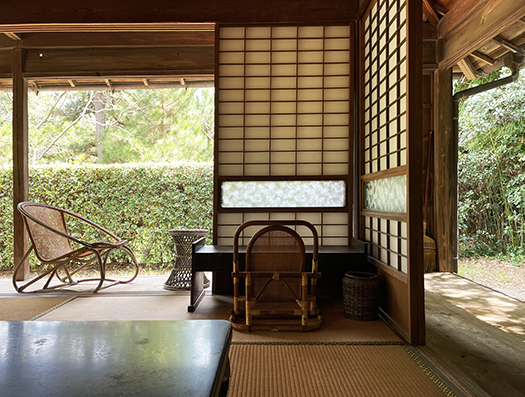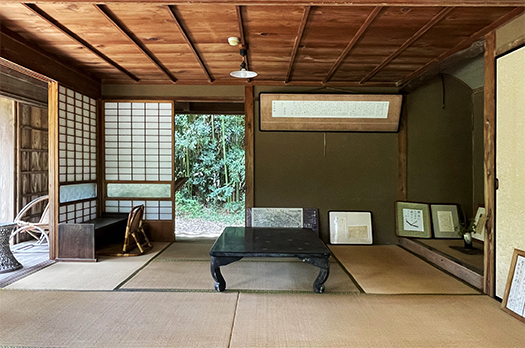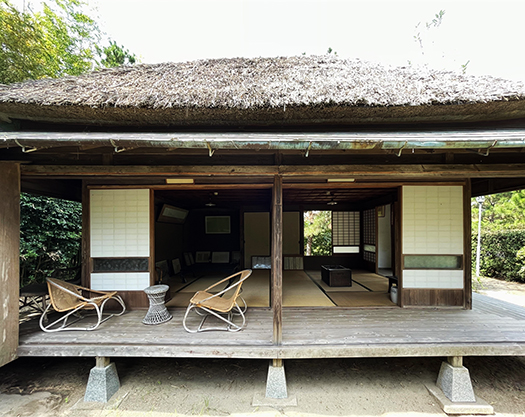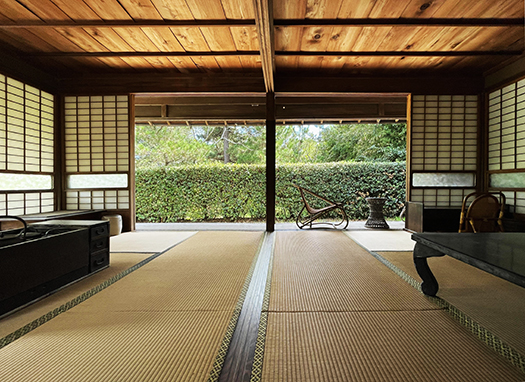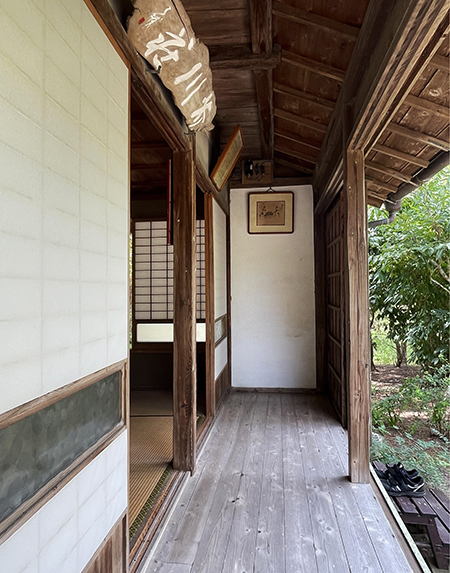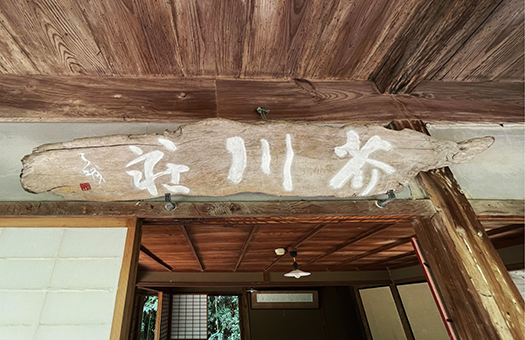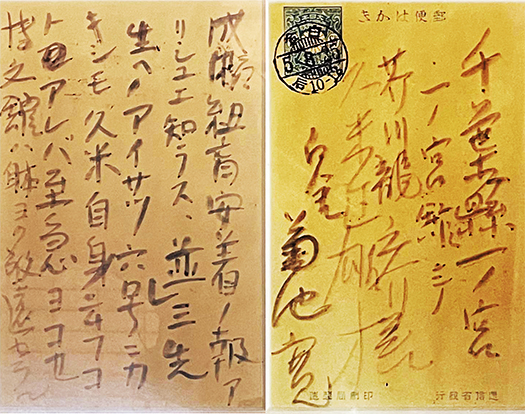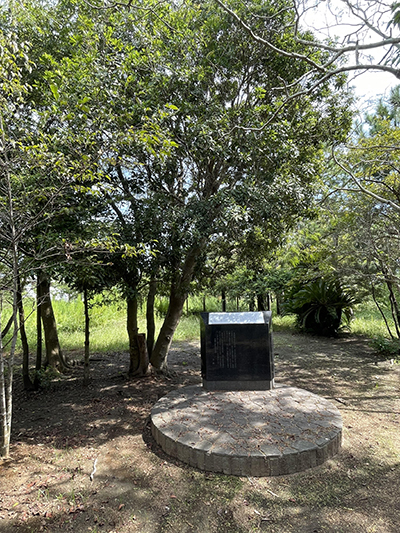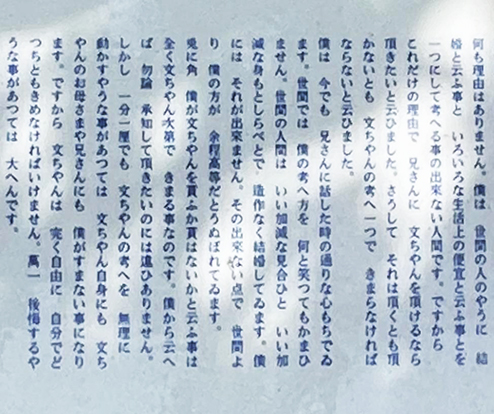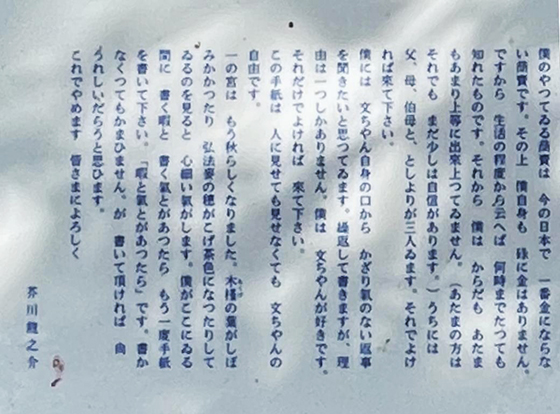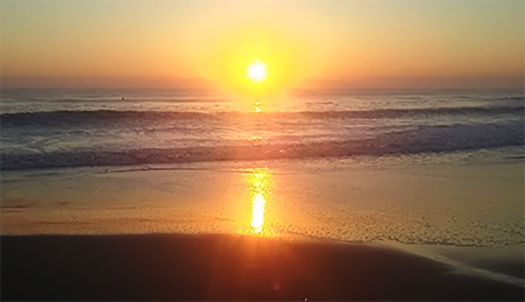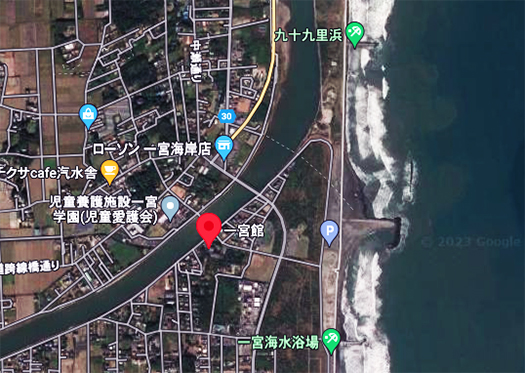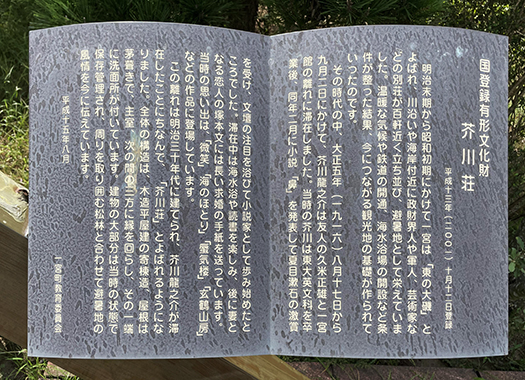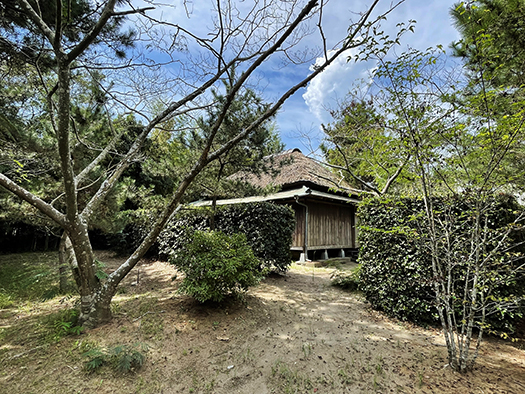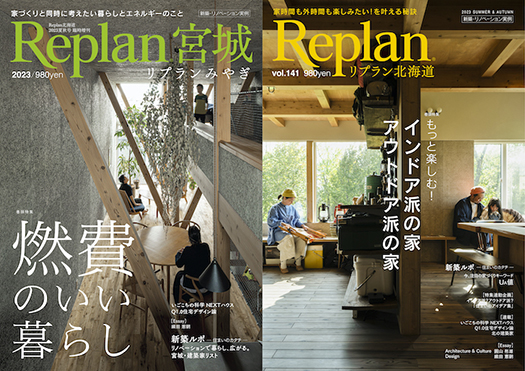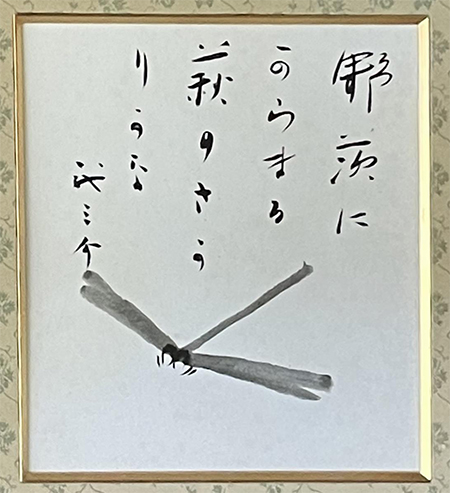
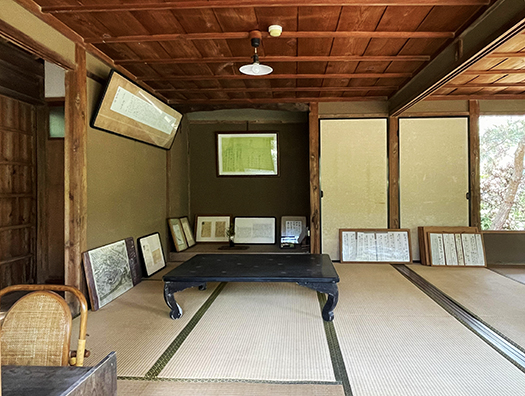
このブログを書いていて、芥川は金持ちのボンボンで定職もないときに海辺の旅館の「離れ」で遊興の限りを尽くしていたのが実相ではないかという意見をいただきます。本日はその辺の調査ブログ(笑)。
〜一宮川河口に位置する旅館・一宮館の離れで、大正3年(1914)と大正5年(1916)に芥川龍之介がこの離れに滞在した。芥川は滞在中にこの離れから、後に妻となる塚本文に長い求婚の手紙を送り、一宮での思い出を「微笑」「海のほとり」「玄鶴山房」「蜃気楼」などの作品に登場させている。
建物は明治30年(1897)の建築。茅葺寄棟造の木造平屋建て。主屋と次の間2室の3方に縁側を回らし、縁側の一端には洗面所を設けている。当地方の伝統的な民家建築技法で建てられ、周囲の松林の閑静な雰囲気と相まって良好な景観となっている。〜<一宮町観光協会HPより要旨抜粋>
一方、芥川作品はこの時期、以下のような作品群。
<翻訳関係>
・バルタザアル 1914年(翻訳、原作アナトール・フランス)
・「ケルトの薄明」より 1914年(翻訳、原作ウィリアム・バトラー・イェイツ)
・春の心臓 1914年(翻訳、原作ウィリアム・バトラー・イェイツ)
・クラリモンド 1914年(翻訳、原作テオフィル・ゴーティエ)
<創作作品>
・ひょっとこ 1915年
・羅生門 1915年
・鼻 1916年
・芋粥 1916年
・手巾 1916年
・煙草と悪魔 1916年
岩波新書「芥川龍之介」(関口安義著)にも「龍之介が一宮館でひと夏を過ごしたときの様子や、夏目漱石との深い師弟関係もくわしく紹介されています」とあり、その文中には以下の記述。
「大学卒業後、芥川は俸給が定まらないまま、大学院に籍を置き、創作に勤しむこととなる」とある。この時代の作家仕事というのは、経済的にどうであったかを偲ばせる。やがて恩師・夏目漱石の配慮で定職を得ることになるが、日本文学「業界」の基盤経済構造も草創期であったといえるのだろう。
恋文の中で「僕のやってゐる商売は今の日本で一番金にならない商売です。その上僕自身も碌に金はありません。ですから生活の程度から云へば何時までたっても知れたものです」と書いているのは正直なところだったのだろう。
「大学を卒業し創作時間は大幅に増えたとは言え、著述に没頭できる時間はいくらあっても足りないほどだった。・・・一宮滞在中(1916年)芥川は同宿の友人と海で泳ぐ一方、計画的に読書をし、翻訳をし、小説を書き、絵や俳句に勤しんだ」と記述されている。


芥川の年譜にも「1915年(大正4年)10月、代表作の1つとなる『羅生門』を「芥川龍之介」名で『帝国文学』に発表。1916年(大正5年)には第4次『新思潮』を発刊し創刊号に掲載した『鼻』が漱石に絶賛される。」といった時期に相当している。
このブログで建築と文学仕事の関連を考えていますが、明示的な資料にはないけれど、どうも作品としては「芋粥 1916年」がこの滞在期間に描かれたものだと想像できる。〜芋粥を腹一杯食べたい、という欲望を大事に持っていた人物が、突然その欲望を他人の力で満たされる事になり・・・夢見る幸せと、他力で叶う味気なさ。〜
妻になる女性にあてた恋文で書かれた「仕事」とは、間違いなく著述作業であったことは疑いようがないと思える。ただし作家稼業で巨万の富を得られたとは思われない。師である夏目漱石にその才能を激賞されて注目を浴び創作に意欲を燃え上がらせていたことは間違いないでしょう。
English version⬇
Literary works associated with this wooden space: Ryunosuke Akutagawa, The Hermitage of Kujukuri – 7
The economy of the “Japanese literary world” and the realities of the writer’s business in 1916. Soseki Natsume intended to nurture the standard-bearers of “Japanese culture” and Akutagawa responded to him. …
In writing this blog, I have received some opinions that the truth is that Akutagawa was a rich bon vivant who, without a regular job, spent his time at a seaside ryokan “away from home” to the fullest extent of his amusement. Today’s blog is an investigation into this matter.
〜The Ichinomiya-kan Ryokan is located at the mouth of the Ichinomiya River, and Ryunosuke Akutagawa stayed at the Ichinomiya-kan in 1914 and 1916. During his stay, Akutagawa sent a long letter of courtship to Tsukamoto, who later became his wife, from this villa, and his memories of Ichinomiya appear in such works as “A Smile,” “On the Edge of the Sea,” “Genkaku Yambo,” and “Mirage.
The building was constructed in 1897. It is a one-story wooden structure with a thatched hipped roof. The main house and the two rooms of the second house are surrounded on three sides by a porch, and a washroom is located at one end of the porch. The house was built using traditional minka (private house) construction techniques of the region, and the quiet atmosphere of the surrounding pine forest makes for a beautiful sight. Akutagawa’s works during this period were as follows.
<Translation
Balthazar, 1914 (translation, original by Anatole France)
From “Celtic Twilight,” 1914 (translation by William Butler Yeats)
Heart of Spring, 1914 (translation by William Butler Yeats)
Clarimonde, 1914 (translation and original by Théophile Gautier)
Hyottoko, 1915.
Rashomon 1915
The Nose, 1916
Sweet potato porridge, 1916.
The handkerchief, 1916
Tobacco and the Devil, 1916
In Iwanami Shinsho’s “Akutagawa Ryunosuke” (written by Yasuyoshi Sekiguchi), “Ryunosuke’s summer at Ichinomiya-kan and his deep teacher-student relationship with Soseki Natsume are also introduced in detail,” and the following statement is included in the book.
After graduating from the university, Akutagawa entered graduate school without a fixed salary and began to work hard on his creative writing. This reminds us of the economic situation of writers in this period. Eventually, he was able to secure a regular job, thanks to the consideration of his former teacher, Soseki Natsume, but the basic economic structure of the Japanese literary “industry” was also in its infancy.
In one of his love letters, he wrote, “My business is the most unprofitable business in Japan today. Moreover, I myself have no money. So, from the point of view of my living standards, I will always be a nobody.
Although he graduated from university and had much more time for creative work, he still had more than enough time to devote to writing. During his stay in Ichinomiya (1916), Akutagawa systematically read, translated, wrote novels, painted, and wrote haiku while swimming in the sea with his housemates.
In October 1915, Akutagawa published “Rashomon,” one of his best-known works, in Teikoku Bungaku under the name “Akutagawa Ryunosuke,” and in 1916, he published the fourth edition of Shin Shicho (New Shicho), and his “Nose” in the first issue was highly praised by Soseki. This corresponds to the period of his career.
I have been thinking about the connection between architecture and literary work on this blog, and although there is no explicit reference to it, apparently I can imagine that the work, “Imo porridge, 1916,” was drawn during this period of his stay. 〜The character who had a cherished desire to eat a full meal of sweet potato porridge suddenly has that desire satisfied by the power of others…….. 〜The story is about the happiness of dreaming and the tastelessness of being fulfilled by other means.
There is no doubt that the “work” described in the love letter to his wife-to-be was writing. However, it does not seem that he could have earned a huge fortune from his writing career. There is no doubt that his teacher, Soseki Natsume, praised his talent highly, and he was attracted by the attention and burning desire to create.
Posted on 10月 12th, 2023 by 三木 奎吾
Filed under: 住宅マーケティング, 日本社会・文化研究 | No Comments »


